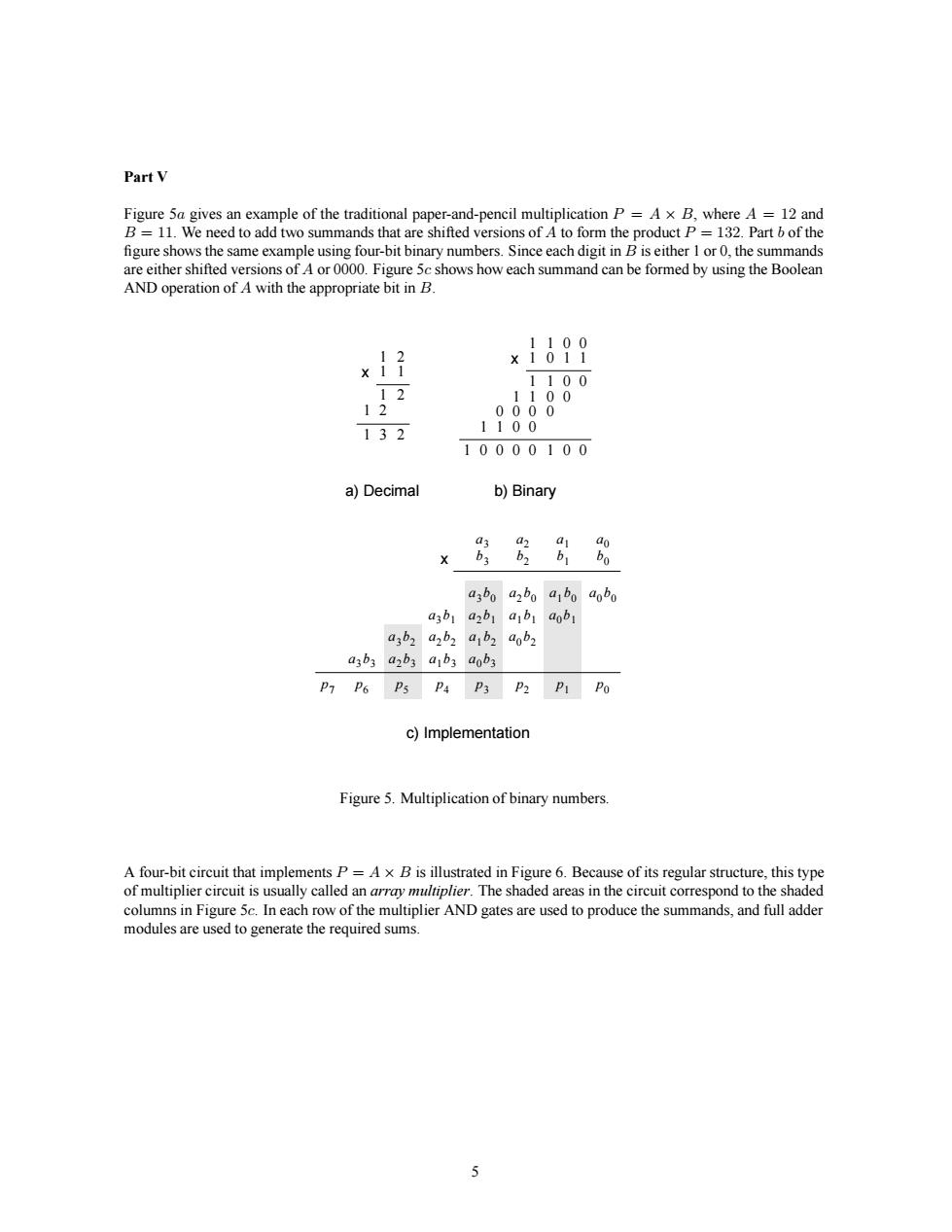正在加载图片...

Part V figure shows the same example using four-bit binary numbers.Since each digit in B is either I or 0,the summand shows how each summand can be formed by using the Boolear x699 132 10000100 a)Decimal b)Binary x88&0 a3bo azbo abo aobo asby azby aby aoby a3b2 azbz abz aob2 asb3 azbs aby aoby c)Implementation Figure 5.Multiplication of binary numbers. eA ererodc hnd nd full adder ules are use to generate the required sums Part V Figure 5a gives an example of the traditional paper-and-pencil multiplication P = A × B, where A = 12 and B = 11. We need to add two summands that are shifted versions of A to form the product P = 132. Part b of the figure shows the same example using four-bit binary numbers. Since each digit in B is either 1 or 0, the summands are either shifted versions of A or 0000. Figure 5c shows how each summand can be formed by using the Boolean AND operation of A with the appropriate bit in B. b0 a0 p0 p1 p2 p3 p4 p6 p7 p5 b0 a1 b0 a2 b0 a3 b1 a0 b1 a1 b1 a2 b1 a3 b2 a0 b2 a1 b2 a2 b2 a3 b3 a0 b3 a1 b3 a2 b3 a3 x 1 1 0 0 1 0 1 1 1 1 0 0 1 1 0 0 0 0 0 0 1 1 0 0 1 0 0 0 0 1 0 0 b) Binary c) Implementation x a0 a1 a2 a3 b0 b1 b2 b3 x 1 2 1 1 1 2 1 2 1 3 2 a) Decimal Figure 5. Multiplication of binary numbers. A four-bit circuit that implements P = A × B is illustrated in Figure 6. Because of its regular structure, this type of multiplier circuit is usually called an array multiplier. The shaded areas in the circuit correspond to the shaded columns in Figure 5c. In each row of the multiplier AND gates are used to produce the summands, and full adder modules are used to generate the required sums. 5